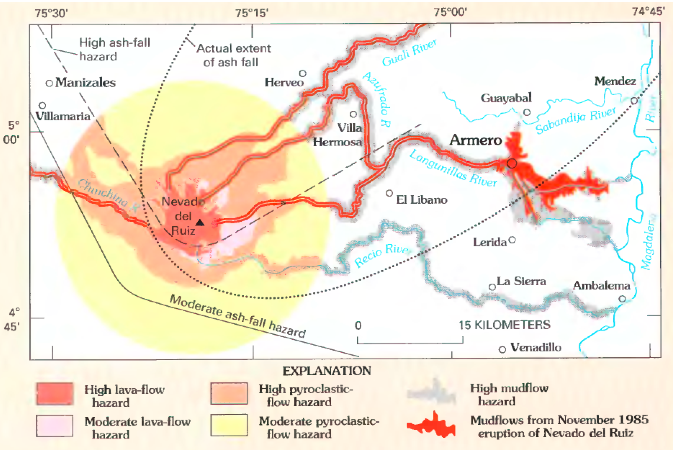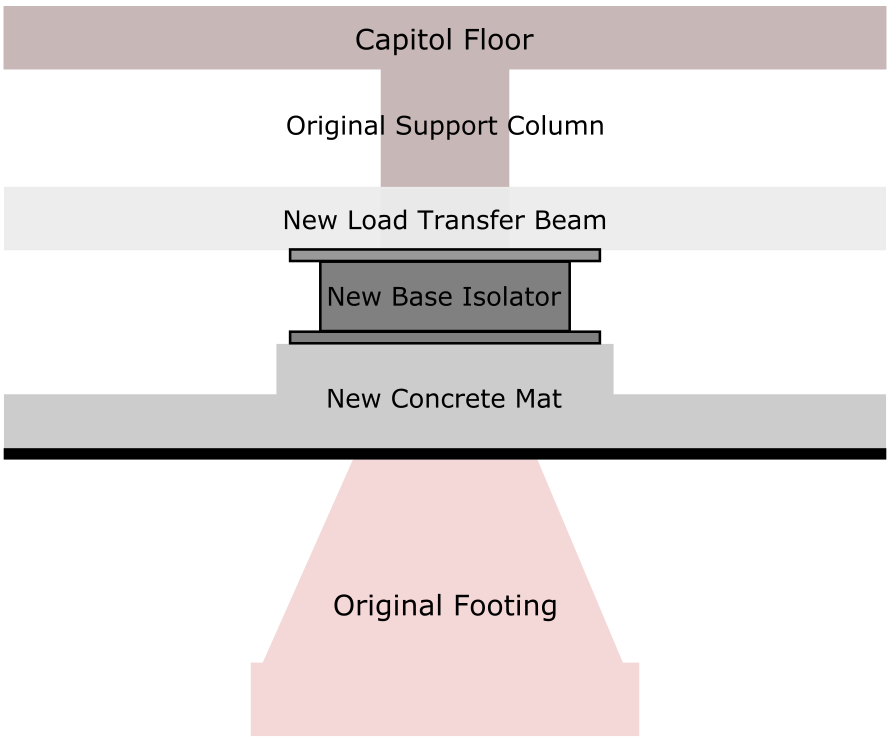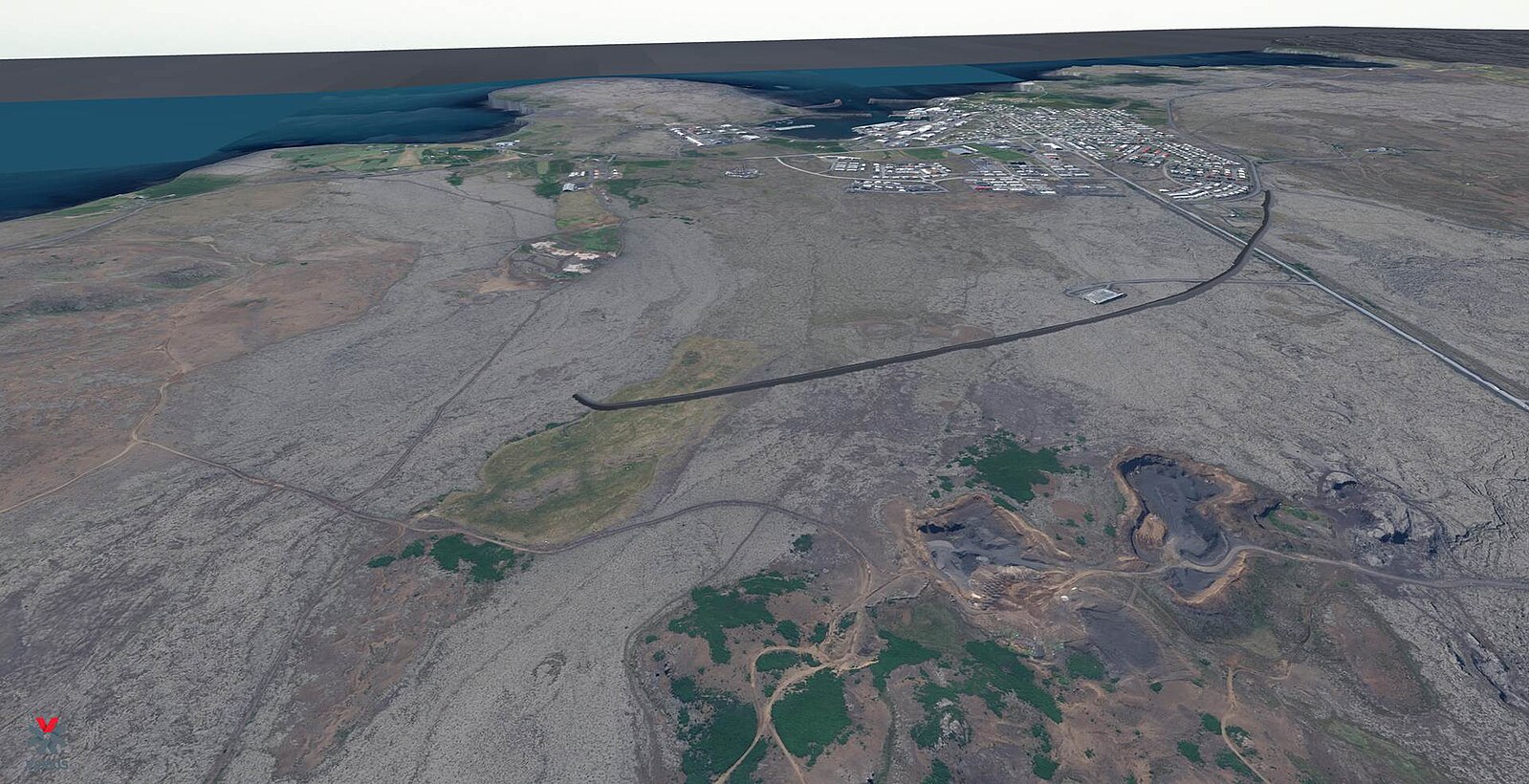Edexcel Specification focus:
‘Strategies to modify the event include land-use zoning, hazard-resistant design, engineering defences, and lava flow diversion; planners and engineers play key roles.’
Hazard modification aims to reduce the physical impacts of tectonic events by directly intervening in natural processes to limit damage, destruction and loss of life.
Land-Use Zoning
Land-use zoning is a strategy used to prevent development in areas most at risk from tectonic hazards, especially around volcanoes and along fault lines.
Land-use zoning: A planning approach that designates specific uses for land based on assessed levels of tectonic hazard risk.
Local and national governments, often in collaboration with planners and hazard specialists, map high-risk zones and restrict or regulate activities within them. The technique is especially effective in volcanic areas, such as around Mount Taranaki in New Zealand or Sakurajima in Japan.
Zones typically include:
Exclusion zones: No development permitted (e.g. areas at risk from pyroclastic flows).
Restricted zones: Limited development (e.g. only essential infrastructure allowed).
Controlled development zones: Buildings must meet strict hazard-resistant regulations.
This approach reduces exposure to lava flows, ash fall, landslides and liquefaction-prone soils.

A volcanic hazard map for Nevado del Ruiz showing predicted lahar zones (red) and secondary hazard areas. This public-domain USGS map demonstrates how planners delineate exclusion and restricted zones based on mapped hazard intensity. Source
Hazard-Resistant Design
Hazard-resistant design (also called retrofitting or seismic engineering) focuses on constructing buildings and infrastructure that can withstand tectonic stresses, especially from earthquakes.
Hazard-resistant design: The use of specific architectural and engineering methods to improve a structure’s ability to survive tectonic events.
Key features of earthquake-resistant buildings include:
Deep foundations and materials that flex with seismic waves.
Base isolation: Shock absorbers installed between building foundations and superstructures.

Caption: Cross-section diagram of the Utah State Capitol base isolation system, illustrating rubber and damping bearings beneath the building. This SVG diagram clarifies how isolation units reduce seismic forces transmitted to a structure. Source
Cross-bracing and shear walls: Reinforces frame stability under lateral stress.
Lightweight materials: Minimises force during shaking.
Counterweights and tuned mass dampers: Helps reduce building sway in tall structures.
In low-income regions, affordable low-tech approaches such as reinforced bamboo frames, tyre foundations, and thatched roofing can be used. These reduce injury and collapse rates during moderate quakes.
Volcanic areas may also require specific designs such as steep-pitched roofs to prevent ash accumulation, or gas-tight doors and windows to reduce volcanic gas infiltration.
Engineering Defences
Engineering defences are large-scale, man-made structures built to divert or mitigate tectonic hazards, especially lava flows and lahars (volcanic mudflows).
Examples of defences include:
Lava diversion barriers: Walls constructed to channel flows away from settlements.

Protective barrier at Grindavík, Iceland, built to deflect advancing lava flows during eruptions. This 1920 × 985 px photograph demonstrates how engineered walls can safeguard populated areas. Source
Artificial channels or tunnels: Routes dug into slopes to guide lava or mudflows.
Retention basins: Reservoirs built to hold debris flows or ash-laden runoff.
Lahar dams: Designed to trap or slow volcanic sediment before it reaches downstream areas.
These structures are commonly deployed in volcanic zones with repeated eruptive activity. For example, in Mount Etna (Italy), lava barriers and trenches have been used successfully to divert flows away from villages. However, their effectiveness depends on terrain, lava viscosity, eruption size, and precise location.
Limitations:
High construction and maintenance costs.
May only protect limited areas.
Risk of failure if hazard magnitude exceeds design specifications.
Lava Flow Diversion
Lava flow diversion is a targeted method of engineering that redirects lava away from critical infrastructure or settlements during eruptions.
Techniques include:
Cooling lava with seawater: Reduces flow speed and hardens the lava crust (used in Iceland, 1973).
Barriers and levees: Constructed quickly to contain or shift flow direction.
Explosives: Rarely, military-grade explosives have been used to alter terrain or rupture lava tubes.
Lava flow diversion: Physical intervention designed to alter the path of a lava flow using natural or artificial barriers or active cooling.
While lava is predictable compared to earthquakes, success depends on early detection, access, and community coordination. Diversions are most viable in basaltic lava fields where lava moves slowly and predictably.
The Role of Planners and Engineers
Planners and engineers play a vital role in implementing event modification strategies:
Planners assess hazard risk maps and design zoning regulations to control urban expansion and infrastructure placement. They must weigh economic, social and political priorities against hazard data.
Engineers design and build hazard-resistant infrastructure and mitigation structures. Their work is crucial in retrofitting existing buildings and ensuring new constructions meet safety standards.
These professionals work with governments, local authorities, and scientists to integrate hazard reduction into long-term development strategies.
Key contributions include:
Creating hazard vulnerability maps.
Advising on building codes and planning regulations.
Leading emergency mitigation construction projects.
Ensuring compliance with zoning restrictions and design codes.
Without their expertise, efforts to modify tectonic events would lack the technical and administrative foundation necessary for success.
Summary of Benefits and Challenges
Benefits of event modification strategies:
Reduced casualties and economic losses.
Greater community preparedness.
Long-term protection of critical infrastructure.
Challenges include:
High upfront costs and funding limitations.
Political and community resistance to land-use restrictions.
Limited feasibility in rapidly urbanising or low-income regions.
While no strategy can prevent tectonic events, modifying the event itself can drastically reduce the severity of their impacts. These approaches must be part of a broader integrated risk management framework.
FAQ
Hazard maps are produced using a combination of geological, historical, and geophysical data. Scientists study past eruption records, fault activity, and topography to identify zones at risk from hazards such as lava flows, ash fall, lahars, or ground shaking.
Modern mapping techniques include satellite imagery, GPS measurements, and remote sensing to track tectonic movement and volcanic deformation.
Maps are regularly updated and colour-coded to show areas of differing hazard intensity, providing a foundation for planners to enforce zoning regulations.
Base isolation reduces the energy transferred from the ground to the structure during seismic shaking. This makes it ideal for densely built environments with many people and critical infrastructure.
Key advantages include:
Preventing building collapse by decoupling the building from ground motion.
Protecting contents and internal systems like electricity and water.
Allowing rapid post-earthquake reoccupation, especially important in city centres.
Although costly, the long-term benefits in reducing structural and economic damage are significant.
In low-income settings, local, low-cost, and flexible materials are used to maximise safety and affordability. These include:
Bamboo and timber: Lightweight and flexible during shaking.
Tyre foundations: Old tyres filled with sand or rubble act as shock absorbers.
Wire mesh: Strengthens mud brick or earth walls against collapse.
Corrugated iron sheets: Used for roofing to reduce ash build-up.
These methods allow communities to construct safer homes without expensive technology.
Lava type affects the feasibility of diversion strategies. Basaltic lava, found at shield volcanoes, is fluid and slow-moving, making it easier to divert.
For basaltic lava:
Barriers, channels, and seawater cooling can be highly effective.
Andesitic and rhyolitic lavas are more viscous, explosive, and fast-moving. These:
Are harder to divert.
Often result in pyroclastic flows rather than lava flows.
Require evacuations and exclusion zones rather than physical defences.
Thus, strategy success is highly dependent on lava composition and flow characteristics.
Yes, engineering defences can fail if:
The volume of lava exceeds design capacity.
Unexpected flow direction or secondary vents occur.
Maintenance is neglected over time.
When failure occurs, the risks include:
Sudden inundation of previously protected zones.
False sense of security, leading to greater exposure.
Economic loss if critical infrastructure is compromised.
Contingency plans and early warning systems are essential alongside physical barriers.
Practice Questions
Question 1 (3 marks)
Outline two ways that land-use zoning can reduce the impacts of tectonic hazards.
Question 1 (3 marks)
Award 1 mark for each valid way outlined (up to 2), plus 1 additional mark for a developed point.
Land-use zoning prevents development in high-risk areas such as exclusion zones. (1)
This reduces the number of people and buildings exposed to hazards like pyroclastic flows or lava. (1)
It can restrict essential infrastructure to lower-risk zones, ensuring critical services are preserved. (1)
Development controls can require buildings in moderate-risk areas to meet hazard-resistant standards. (1)
Question 2 (6 marks)
Explain how hazard-resistant building design and engineering defences can reduce the damage caused by tectonic events.
Max 3 marks
Question 2 (6 marks)
Level 1 (1–2 marks):
Basic understanding of hazard-resistant design or engineering defences with little detail or explanation.
Level 2 (3–4 marks):
Clear description of at least one strategy with some explanation of how it reduces damage.
Level 3 (5–6 marks):
Detailed explanation of both strategies, using accurate terminology and clear linkage between the method and reduction in damage.
Indicative content:
Hazard-resistant design includes base isolation, cross-bracing, and lightweight materials, which reduce structural collapse and injury during earthquakes.
Engineering defences such as lava barriers or artificial channels redirect or contain hazardous flows, protecting populated areas.
Both approaches limit physical damage, reduce casualties, and support faster recovery.

